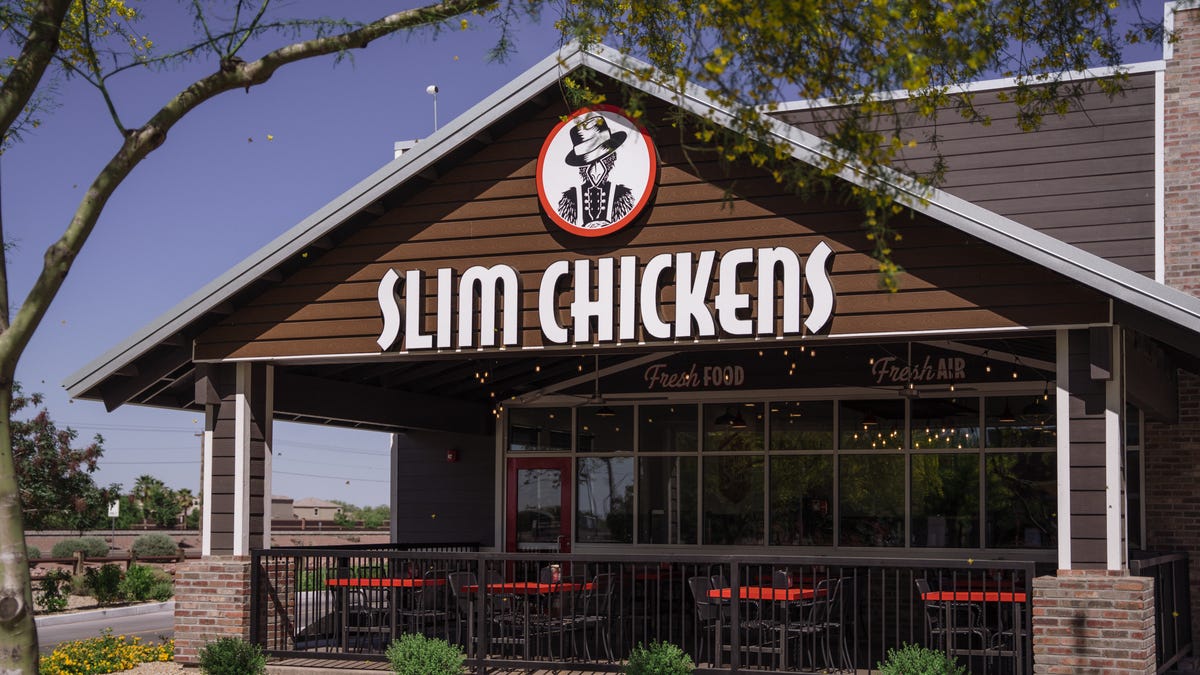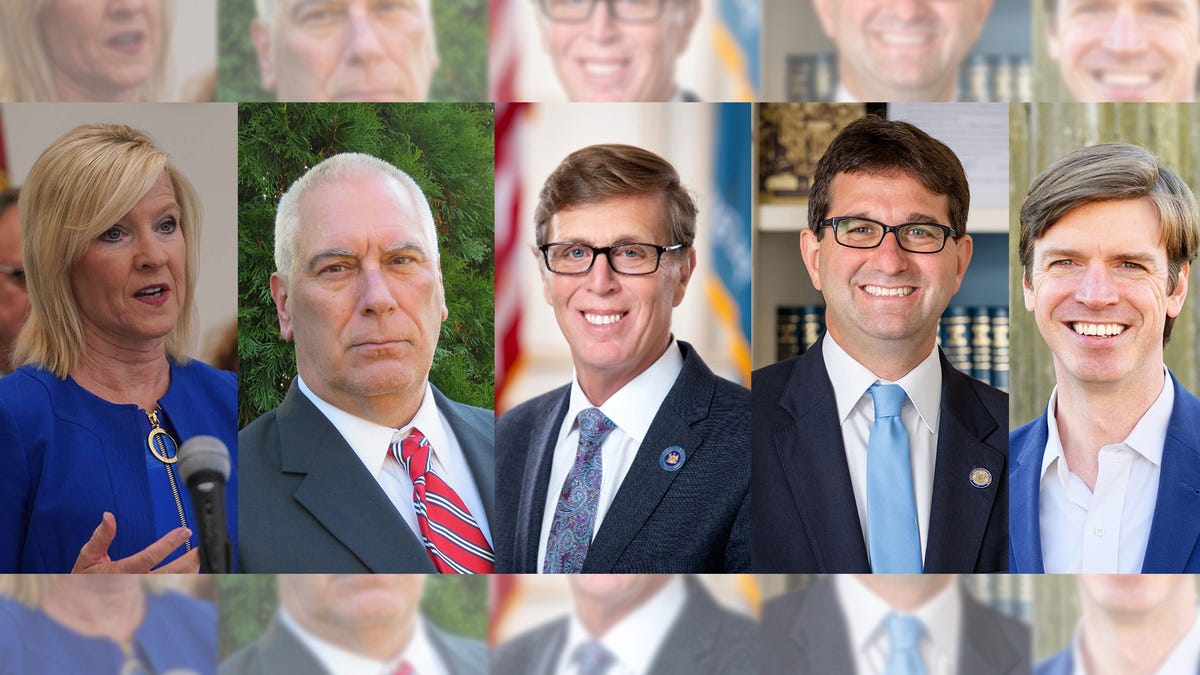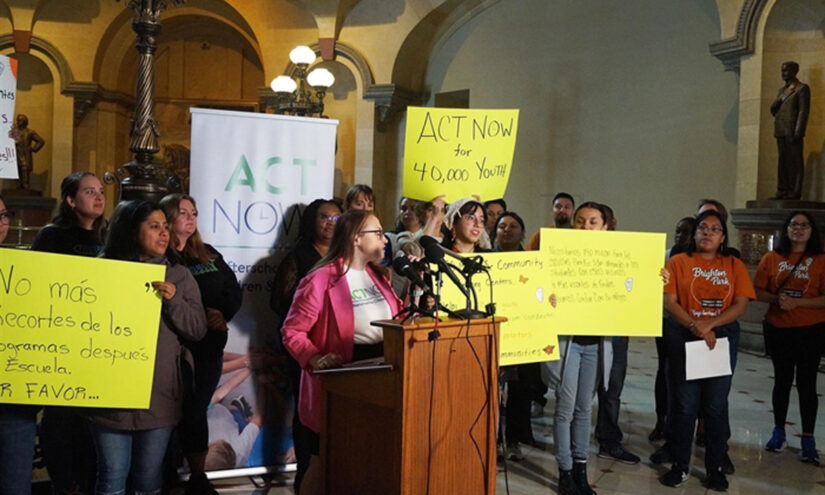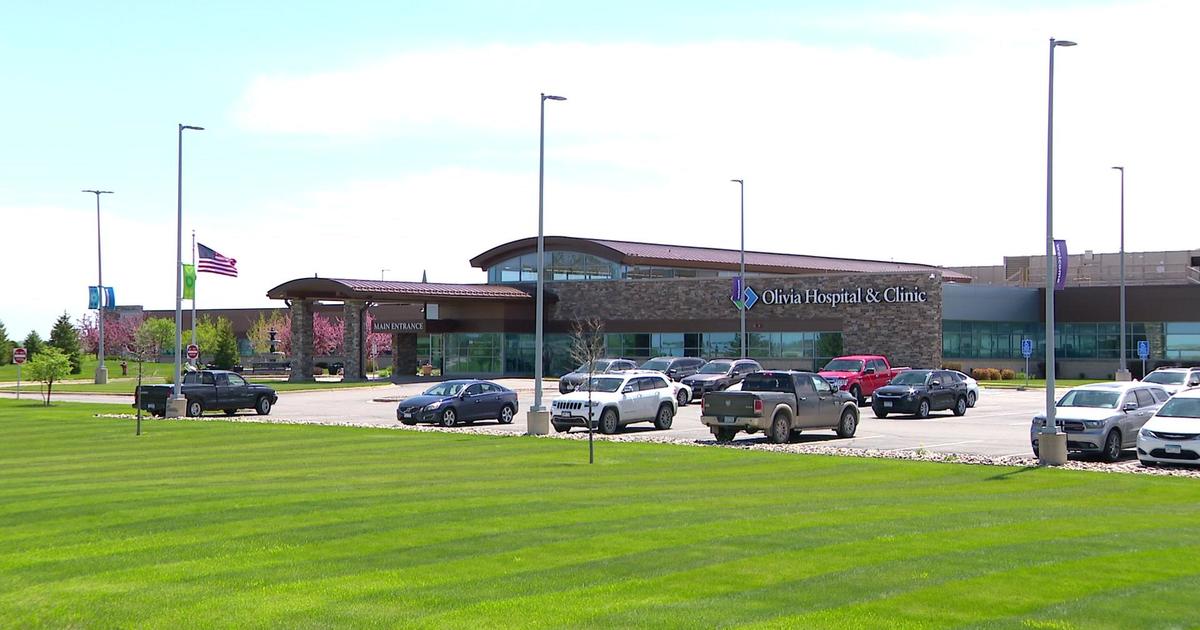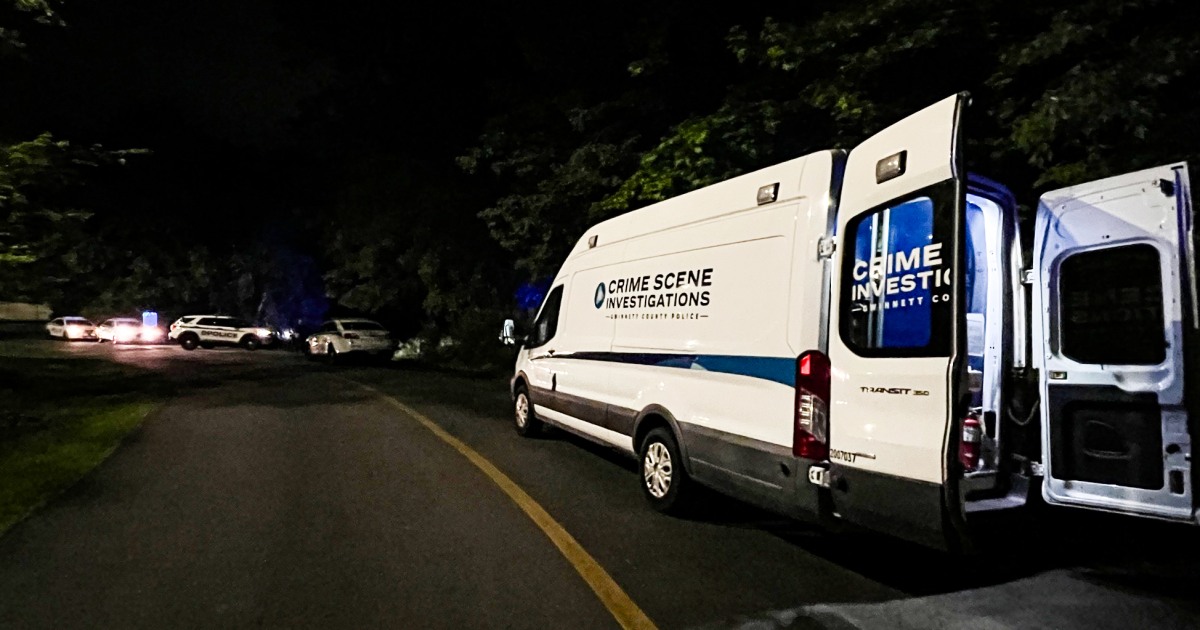Austin, TX
Will Central Texas semiconductor scene be rewarded with CHIPS Act funding? Experts say yes
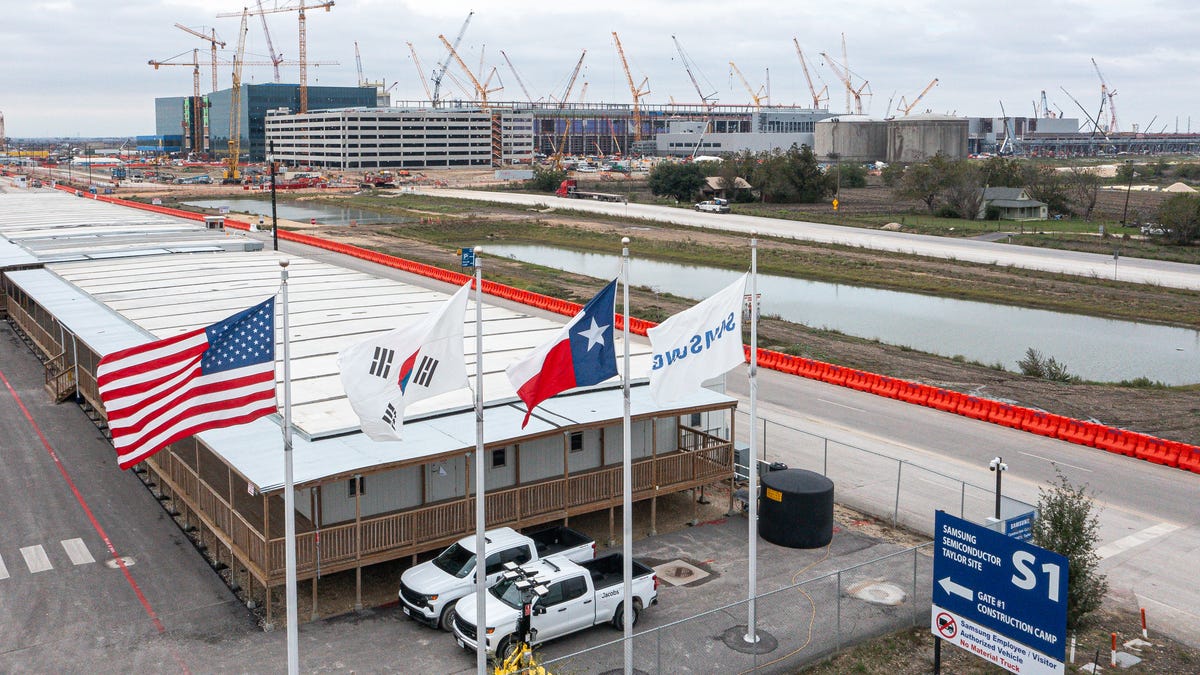
It still remains to be seen if Austin-area projects will benefit from legislation designed to boost the semiconductor industry, as the Commerce Department starts announcing as soon as this month which companies will be awarded funding.
Central Texas is among a handful of regions expected to see a boost from the Chips and Science Act, which was passed in 2022. The legislation made $52 billion available for companies that manufacture computer chips, billions more in tax credits to incentivize chip manufacturing, and tens of billions of dollars to fund scientific research and development of other U.S. technologies.
So far, no projects in Texas have been included in the first handful of announcements made by the Commerce Department, but local industry leaders remain optimistic in the Austin-area’s ability to compete with the hundreds of projects waiting to see if they will receive the remaining funding.
Ed Latson, CEO of Opportunity Austin, said he anticipates the funding to make a major impact in Central Texas, which is already home to facilities from companies including Samsung Semiconductor, NXP, Tokyo Electron and Infineon.
“I expect to see grants being issued to local companies soon,” Latson said. “We have one of the most dynamic semiconductor ecosystems in the United States and this will only make us more competitive as a region and as a country.”
Kevin Fincher, CEO of the Austin Regional Manufacturers Association, agreed that the region remains in a strong position.
“I believe that Central Texas will lead in the semi-industry going forward, and we’re well positioned for that,” Fincher said.
The Austin-area’s existing ecosystem of companies in the semiconductor industry includes fabrication facilities that make chips, toolmakers and a supply base that works with the toolmakers and fabrication facilities.
Fincher predicted that Central Texas projects could hear about funding awards as early as March.
“We expect in the in the coming month, March, that there is going to be a slew of announcements that will start to come out,” Fincher said. “I think Commerce is finalizing the applications and we are going to hear some pretty hopefully exciting announcements coming, which will impact some of the companies working here or that have operations here.”
Even before the passage of the CHIPS Act, the Central Texas region has been poised to see big expansions to its manufacturing capacity. Samsung, which already had two fabs in Austin, announced last year that it planned to build a $17 billion chip factory in Taylor. Filings also show the company could put as many as 11 additional fabrication facilities in Central Texas in the coming decades, though the company has said it does not have concrete plans.
Semiconductor giant NXP also has been considering an expansion in Austin. Last year, the Austin City Council approved an incentive deal worth just over a million dollars. Following Raimondo’s speech, the company said it continues to engage with the Commerce Department on its proposals.
“While we cannot indicate a timeline with certainty, we understand the process could take a number of months and we are optimistic that the proposed expansion would meet the program goals,” a company spokesperson said. “We are pleased there continues to be an ongoing dialogue and movement on the need to support the industry.”
Fincher predicted investment will continue, both in company growth and in the workforce needed to support these companies.
Samsung to partner with UT engineering school, donate $3.7M to aid semiconductor workforce
CHIPS Act funding is leading to ‘tough conversations’
During a February 4 event hosted by Cybersecurity and Infrastructure Security Agency, Commerce Secretary Gina Raimondo said there are “tough conversations” as the department works on distributing the funding. During the event, Raimondo also said the department would now be prioritizing projects that will be operational by 2030.
The changes came as leading-edge companies requested about $70 billion in funding, or about double the amount in federal subsidies available. So far, Commerce has announced about $2.5 billion in funding to three companies BAE, Microchip, and Global Foundries
Raimondo said while there’s risk in picking winners and losers, there is “way more risk in doing nothing” and said there will likely need to be another CHIPS Act in the future to continue to boost the industry.
“We’re going to have to say no to excellent companies with excellent proposals,” Raimondo said.
Raimondo acknowledged during the CISA event that companies were also likely frustrated to receive less funding than they were hoping.
While acknowledging that there have been project delays nationally that may be related to the rollout of funding, Matt Bryson, an industry analyst with Wedbush Securities, has already been working as intended.
“We’ve seen arguably a historic amount of chip infrastructure investment planned for the U.S., including from a number of companies that either had never invested in the U.S. or who had chosen not to invest in U.S. fabs in recent years,” he said.
He added, the focus on projects that will be completed by 2030 makes sense.
“If the goal is to accelerate investment, I think it necessarily makes sense to prioritize the bird in hand so to speak, vs. investment plans that are further out and that might not come to fruition,” Bryson said.
Fincher, of ARMA, said Central Texas will likely benefit from the 2030 timeline.
“We are very much in the right spot,” he said. “Most of the companies that we’re looking at will be set up and operational and running by then. So, I think that’s an advantage right now to our manufacturing sector here in Central Texas.”

Austin, TX
Taylor-Based Foundation Gifts 68-Acre Property to UT to Support Semiconductor Ecosystem
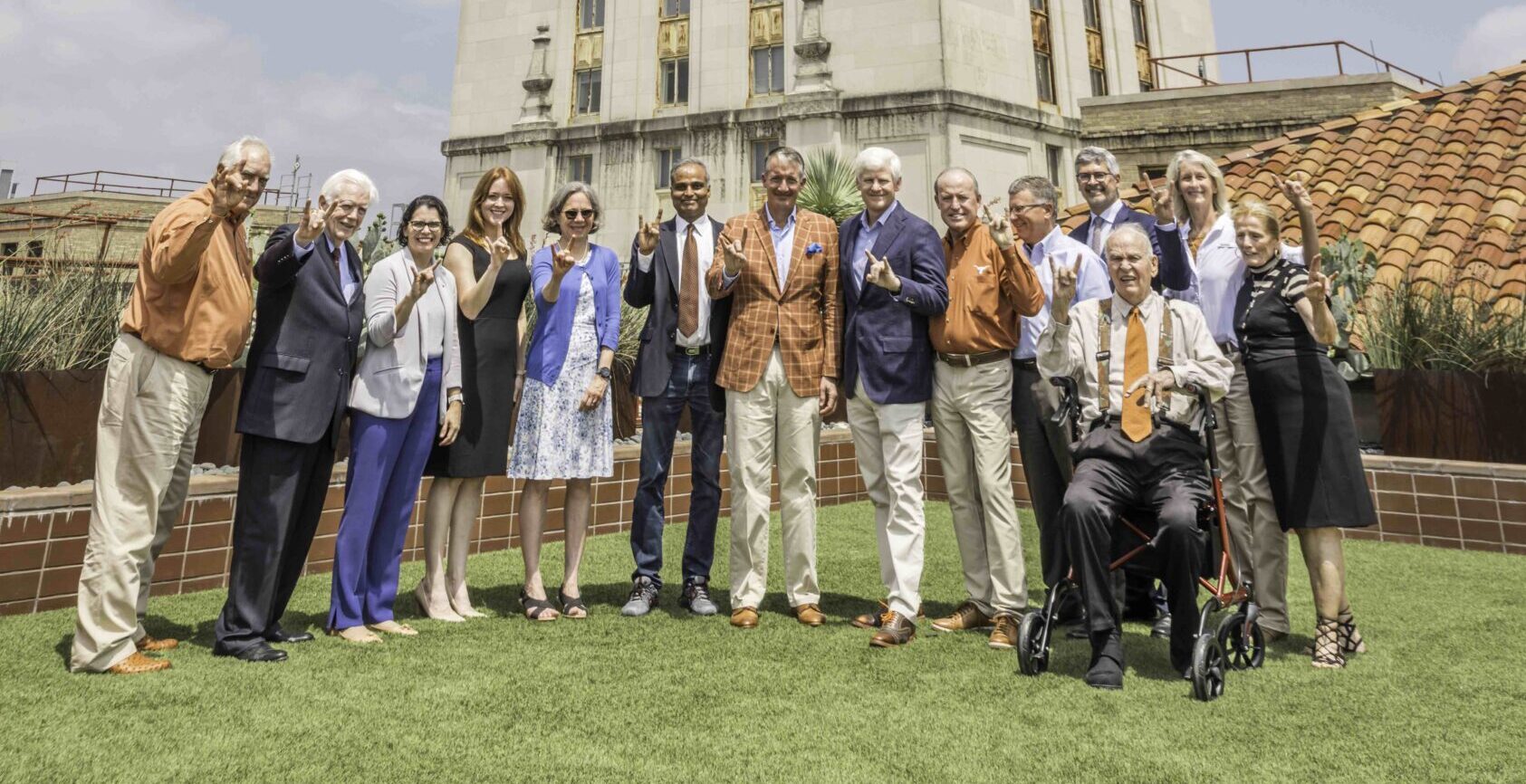
AUSTIN, Texas — A foundation formed 28 years ago to attract a higher education center to the city of Taylor, just northeast of Austin, has given The University of Texas at Austin a 68-acre tract that will be developed into The University of Texas at Austin – Taylor Center. The property is situated near Samsung Austin Semiconductor’s new 6 million-square-foot chip fabrication plant and will catalyze the region’s growth as a national leader in the semiconductor supply chain.
“Advancing innovation, growing education and cultivating leadership in the semiconductor space is a major area of focus for The University of Texas, and we are excited to have a presence in the burgeoning Taylor community and the opportunity to further shape the expanding footprint of the semiconductor ecosystem in Central Texas,” said President Jay Hartzell. “We are grateful to the Temple College at Taylor Foundation for welcoming UT into its vision for educational and economic opportunity in the region and to the City of Taylor for its commitment to supporting one of the nation’s most critical needs.”
The undeveloped land, adjacent to Taylor High School on U.S. Highway 79, is a gift from the Temple College at Taylor Foundation, a nonprofit organization established by Taylor residents to provide higher education in the city. Its proximity to Samsung’s new $17 billion facility makes it a natural fit for UT initiatives such as the Texas Institute for Electronics (TIE), which is considering use of the site for training and research with semiconductor partners.
UT has a rich history as a leader in America’s semiconductor industry dating back to the formation of Sematech in the 1980s. The Texas Legislature has invested $552 million in TIE to better position the region to compete for federal CHIPS Act funding. TIE is using some of the state funds to refurbish existing fabrication plants at the original Sematech site on Montopolis Drive and at UT’s J.J. Pickle Research Campus on Burnet Road.
“The Temple College at Taylor Foundation has embraced a thoughtful evolution of ideas that culminated in the establishment of The University of Texas at Austin – Taylor Center,” said James Bartosh, president of the foundation and a UT alumnus. “UT’s and Samsung’s investments in Taylor will result in the advancement of education, research and quality of life in Central Texas.”
UT will work with Taylor community and industry partners to determine the highest-impact uses of the Taylor Center to grow and support Central Texas’ semiconductor workforce and supply chain. The University has assembled a site task force and is interviewing leaders across campus to determine which programs would be best fits for the new Taylor Center.
“The City of Taylor is thrilled to welcome The University of Texas at Austin,” said Mayor Brandt Rydell. “UT’s presence in our vibrant, growing community will provide even more opportunities for future generations and help solidify the city’s place as a center for progress and enrichment in Williamson County and the state of Texas.”
“If UT can change the world with Forty Acres, one can only imagine the impact the University can make with our gift of 68 acres,” said Louis Hughes, a board member of the foundation and UT alumnus.
Austin, TX
Dallas Cowboys Sign Former Texas Longhorns LB For Rookie Minicamp
AUSTIN — Despite much anticipation, the Dallas Cowboys missed out on selecting Texas Longhorns running back Jonathon Brooks in the 2024 NFL Draft, but one former Longhorn still managed to land with America’s Team in an under-the-radar move.
Former Texas linebacker Byron Vaughns wasn’t selected in the 2024 NFL Draft in April, but the Cowboys have signed him as one of 12 undrafted free agents for the team’s rookie minicamp.
Vaughns was a three-star recruit out of Fort Worth for the Longhorns and former coach Tom Herman in the 2018 class. He spent two years in Austin, posting 14 total tackles and a forced fumble, but entered the transfer portal in 2020 and took his talents to Utah State.
The move to Utah State proved to be a beneficial one. Vaughns’ numbers increased during his two years with the Aggies, which was highlighted by a 2021 season in which he posted 4.5 sacks and six passes defended.
He then came back to his home state to play for the Baylor Bears this past season. He finished the year with 30 total tackles, three sacks, one forced fumble and one pass defended. Vaughns faced off against his former team in Big 12 play this past September, but No. 3 Texas walloped Baylor in a 38-6 win in Waco. He had one total tackle in the loss.
Austin, TX
Austin police arrest 6 people after 'unusually deadly' surge of opioid overdoses
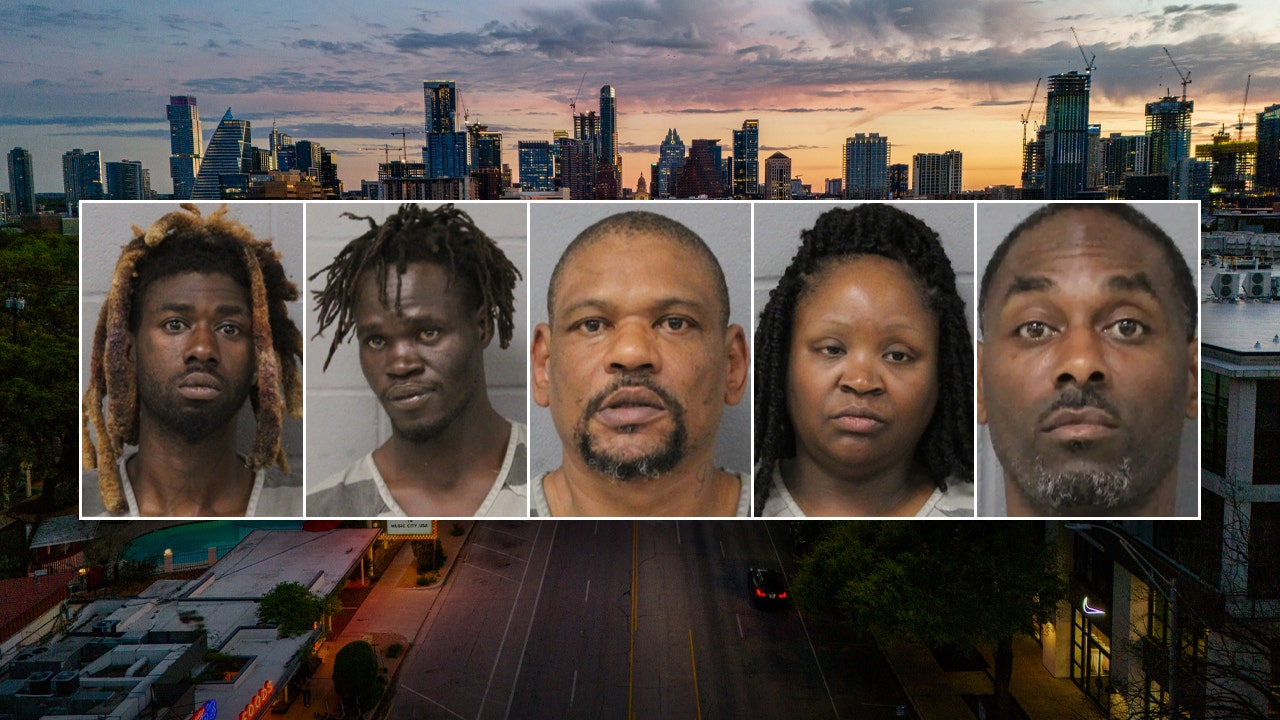
Police in Texas have arrested six individuals after an unusually deadly string of nearly 80 drug overdoses, resulting in nine fatalities last week.
The Austin Police Department arrested 45-year-old Ronnie Lamar Mims, 30-year-old Marcellus Dion Barron, 32-year-old Kanady Arkangelo Rimijo, 50-year-old Gary Joseph Lewis, 47-year-old Denise Horton, and 27-year-old Guy Len Allen.
FOX 7 Austin reported that according to court documents, the six individuals were charged with felony possession or delivery of a controlled substance.
But during a press conference Tuesday, Austin Police Department Lt. Patrick Eastlick told reporters none of the suspects in custody were directly linked to the victims of the overdoses last week.
WITH MORE THAN 60 OVERDOSES AND 8 KILLED, TEXAS CAPITAL SEEING ‘UNUSUALLY DEADLY’ STRING OF OPIOID INCIDENTS
Ronnie Mims booking photo (Austin PD)
At about 9 a.m. on April 29, Austin-Travis County EMS personnel began responding to a sudden surge of opioid-related calls.
The calls came from the downtown portion of Austin, then began spreading to all areas of the city.
Austin Chief Deputy Medical Director Dr. Heidi Abraham said at the time that on a typical day, emergency personnel could respond to between two and three overdose calls. On April 29, crews had responded to at least 30 calls, but by the end of the week, they had responded to 80 overdose calls, which resulted in at least nine deaths.
“We haven’t seen a spike in overdoses of any kind like this since we dealt with K2 in 2015,” Austin-Travis County EMS Capt. Christa Stedman told FOX 7.
UT AUSTIN ANTI-ISRAEL AGITATORS FREED AFTER GOVERNOR SAID THEY ‘BELONG IN JAIL’
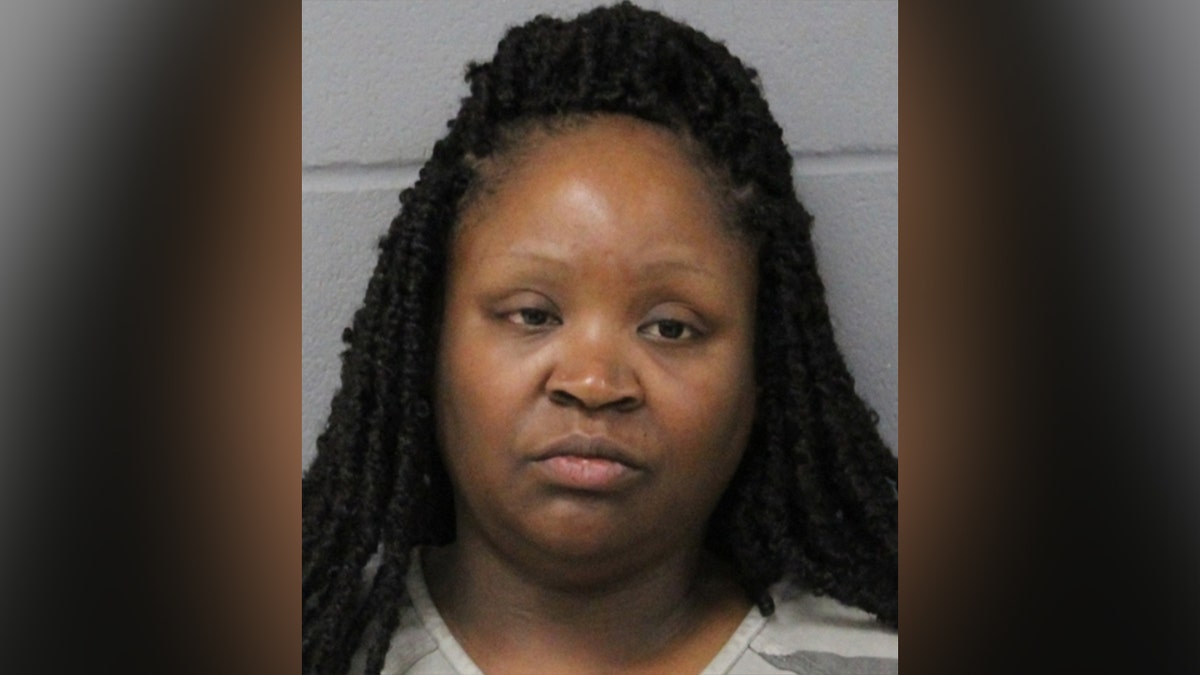
Denise Horton booking photo (Austin PD)
In response to the surge, Eastlick said members of the Organized Crime Division, Narcotics Support Unit, and other divisions of the Austin Police Department began conducting targeted undercover investigations in areas where there was an increase in overdoses.
In particular, the investigations homed in on the downtown section, North Austin and South Austin.
The undercover operations resulted in numerous arrests related to narcotics, but Eastlick wanted to be clear that none of the individuals arrested during the investigations were linked to the overdoses.
UT-AUSTIN PRESIDENT DEFENDS SHUTTING DOWN ANTI-ISRAEL PROTESTS: ‘OUR RULES MATTER AND THEY WILL BE ENFORCED’
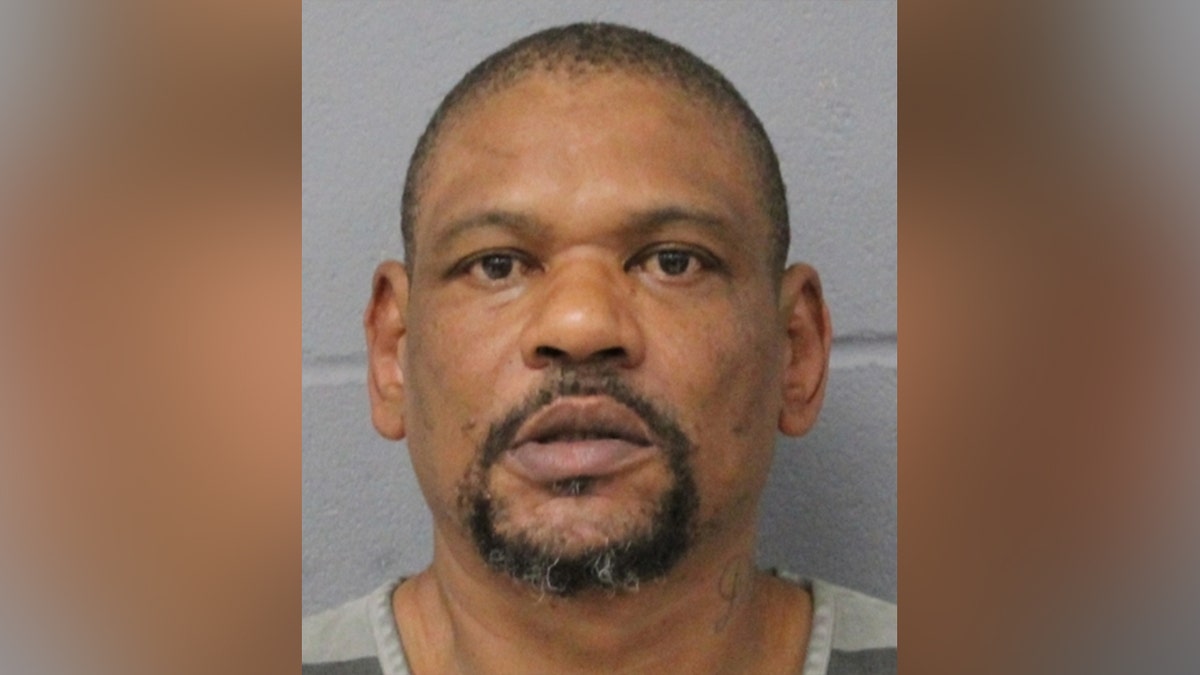
Gary Lewis booking photo (Austin PD)
“The purpose of these operations was to try to identify dealers responsible and the sources of the narcotics which caused the overdoses,” he said.
Eastlick also said during the operations, they seized various narcotics such as crack cocaine, methamphetamine and marijuana, which contained fentanyl.
The department said it does not come across marijuana laced with fentanyl often, but has seen it in the past.
“It is concerning to us, not only with marijuana, but with all the substances that are being mixed with fentanyl. And it’s a concern that all people should have when consuming illicit narcotics,” Eastlick said. “And that’s one of the risks…is you really don’t know what’s in it.”
SUSPECT IN DEADLY TEXAS DPS OFFICE CRASH NOW CHARGED, FACING $2M BAIL
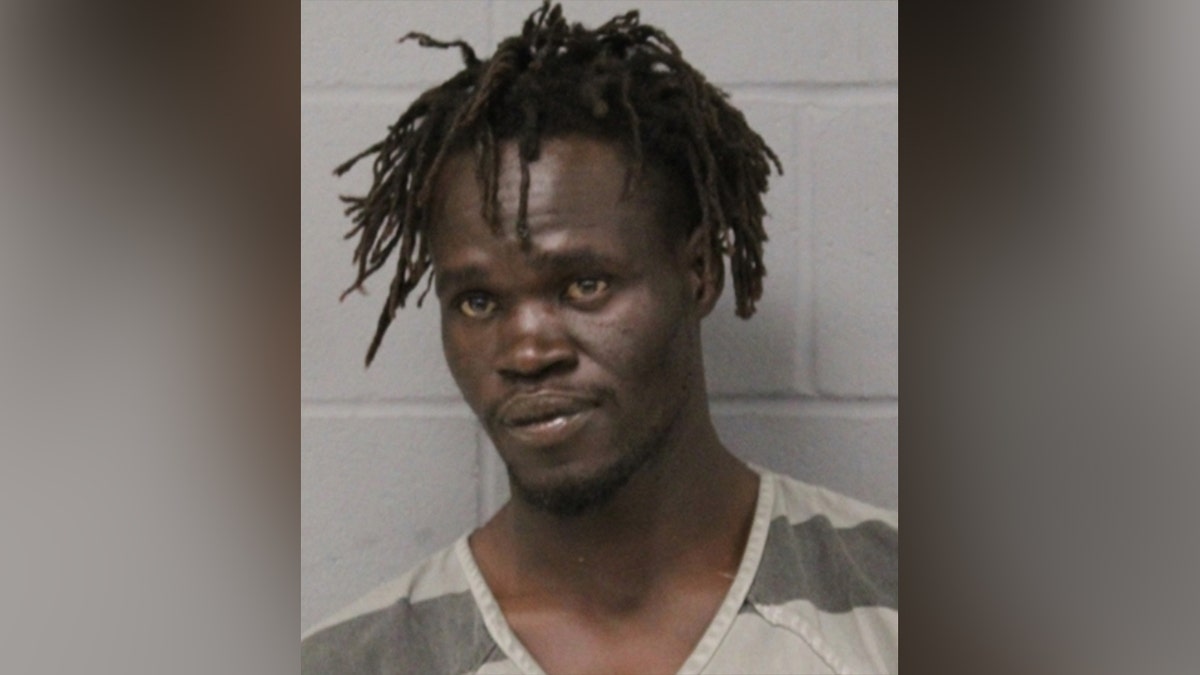
Kanady Rimijo booking photo (Austin PD)
Investigators theorize that when crack cocaine is purchased, the dealers end up mixing it with other substances like fentanyl to create more volume and make more money, Eastlick explained.
So, what potentially happened is between people selling crack cocaine to other dealers and then to buyers, fentanyl was mixed into the batch.
“These mixtures aren’t done in labs, and so there’s no scientific approach to it,” Eastlick said. “So, potentially too much fentanyl…got mixed in with the substances and caused the overdoses that we saw.”
Historically, he said, many of the narcotics dealers in Austin are considered street level, or they are out to make a profit for themselves, as opposed to being part of major organized crime.
Court documents obtained by FOX 7 show that when APD arrested Mims, he was allegedly in possession of fentanyl-laced cocaine in his pants, which was discovered after Narcan was administered to a man he was with. Mims has been charged with third-degree felony possession of a controlled substance.
VIRGINIA FIRST LADY, AG TEAM WITH RECOVERING ADDICT TO LAUNCH INITIATIVES TARGETING STATE’S FENTANYL CRISIS

Marcellus Barroin booking photo (Austin PD)
Lewis and Horton were allegedly inside a car with baggies of drugs, which they are accused of distributing and taking money from a dealer. The two were arrested and charged with second-degree felony fentanyl possession after the marijuana inside the vehicle tested positive for fentanyl.
The station also reported that Rimijo and Barron were arrested for selling crack cocaine to an undercover officer. Rimijo reportedly had marijuana in his jacket pocket, and all the drugs in their possession tested positive for fentanyl.
Rimijo faces first-degree felony delivery of a controlled substance and Barron faces second-degree felony delivery of a controlled substance.
MEXICO’S CHIEF DETECTIVE APOLOGIZES FOR ‘INADEQUATE’ REMARK ABOUT COUNTRY’S FENTANYL PRODUCTION
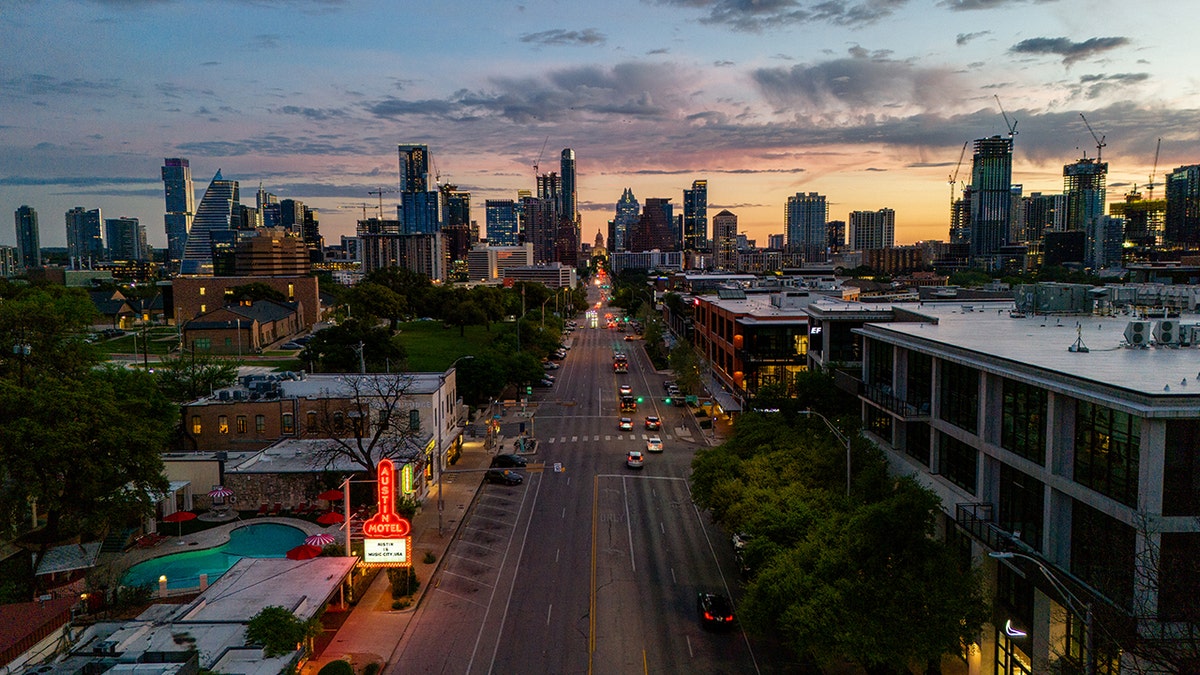
Police and EMS received an unusually high number of calls for drug overdoses in Austin, Texas, last week. (Brandon Bell/Getty Images)
The sixth suspect arrested was Allen, who police claim was with another man when the two of them were involved in a drug deal with a homeless person. Officers allegedly found meth-laced marijuana inside Allen’s car inside a drug-free zone near a day school, and he was charged with first-degree felony possession with intent to distribute.
Eastlick advised the public to be mindful of suspicious activity in their communities and reach out to police if they see something of concern.
He also had a message for those selling drugs in Austin.
CLICK HERE TO GET THE FOX NEWS APP
“Stop. Stop spreading the poison that’s affecting our community,” Eastlick said, adding that police do not know what they are selling or how.
According to the Austin-Travis County EMS, opioid overdoses returned to their typical levels on Monday, though police could not say whether the bad batch of drugs had left the city.
Austin police and Austin-Travis County EMS did not immediately respond to Fox News Digital’s request for comment.
-

 World1 week ago
World1 week agoStrack-Zimmermann blasts von der Leyen's defence policy
-

 Politics1 week ago
Politics1 week agoStefanik hits special counsel Jack Smith with ethics complaint, accuses him of election meddling
-

 Politics1 week ago
Politics1 week agoThe White House has a new curator. Donna Hayashi Smith is the first Asian American to hold the post
-

 Politics1 week ago
Politics1 week agoDemocratic mayor joins Kentucky GOP lawmakers to celebrate state funding for Louisville
-

 World1 week ago
World1 week agoTurkish police arrest hundreds at Istanbul May Day protests
-

 News1 week ago
News1 week agoVideo: Police Arrest Columbia Protesters Occupying Hamilton Hall
-

 Politics1 week ago
Politics1 week agoNewsom, state officials silent on anti-Israel protests at UCLA
-

 News1 week ago
News1 week agoPolice enter UCLA anti-war encampment; Arizona repeals Civil War-era abortion ban



